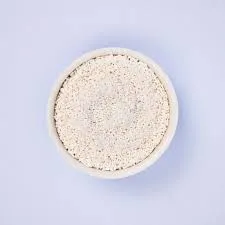
colouring agents in food
The Role of Colouring Agents in Food A Comprehensive Overview
The visual appeal of food plays a crucial role in our perception and desirability of different dishes. One of the primary methods to enhance the aesthetic allure of food is through the use of colouring agents. These substances, which can be derived from natural sources or synthesized in laboratories, serve to improve the appearance of food, making it more enticing to consumers.
The Role of Colouring Agents in Food A Comprehensive Overview
On the other hand, artificial colouring agents, such as Red 40, Yellow 5, and Blue 1, are synthesized through chemical processes. These synthetic dyes are often more stable, vibrant, and cost-effective compared to their natural counterparts. However, their safety has been a topic of concern; studies have linked some artificial colours to allergic reactions and hyperactivity in children. As a result, regulatory bodies like the FDA in the United States and EFSA in Europe have set strict guidelines for their usage.
colouring agents in food

The application of colouring agents extends beyond merely enhancing the visual appeal of food. They play a significant role in food branding and marketing, as people often associate certain colours with specific flavours or qualities. For instance, consumers may expect a lemon-flavoured product to be a bright yellow, while a strawberry-flavoured item may be a vibrant red. This expectation can influence purchasing decisions, as consumers are more likely to choose products that look appealing and familiar.
Furthermore, the use of colouring agents is not limited to packaged foods; they also play a vital role in culinary artistry. Chefs often use various colourants to elevate their dishes, creating visually stunning presentations that not only tantalize the taste buds but also appeal to the eyes. This aspect of food preparation highlights the importance of colour in the overall dining experience.
However, the increasing consumer demand for clean labels and transparency in food production has prompted a shift towards natural coloring agents. Many food manufacturers are now reformulating their products to replace artificial dyes with natural alternatives, highlighting a growing trend focused on health and sustainability.
In conclusion, colouring agents play a significant role in the food industry, influencing not only the aesthetics but also consumer perceptions and marketing strategies. As awareness of health implications grows, a shift towards natural colouring agents is likely to continue, reflecting broader changes in consumer preferences and priorities. The journey of food from farm to table is not just about taste but also about its visual representation, making the role of colour an essential aspect of our culinary experiences.
-
nitrile-rubber-honoring-strict-production-standardsNewsAug.22,2025
-
aspartame-ingredients-honoring-food-safety-valuesNewsAug.22,2025
-
fertilizer-for-balanced-plant-nutritionNewsAug.22,2025
-
cyanide-gold-processing-with-high-purity-additivesNewsAug.22,2025
-
formic-acid-in-textile-dyeing-applicationsNewsAug.22,2025
-
aluminum-hydroxide-gel-in-skincare-productsNewsAug.22,2025
-
Regulatory Compliance for Global Mining Chemicals UseNewsAug.12,2025
Hebei Tenger Chemical Technology Co., Ltd. focuses on the chemical industry and is committed to the export service of chemical raw materials.
-

view more DiethanolisopropanolamineIn the ever-growing field of chemical solutions, diethanolisopropanolamine (DEIPA) stands out as a versatile and important compound. Due to its unique chemical structure and properties, DEIPA is of interest to various industries including construction, personal care, and agriculture. -

view more TriisopropanolamineTriisopropanolamine (TIPA) alkanol amine substance, is a kind of alcohol amine compound with amino and alcohol hydroxyl, and because of its molecules contains both amino and hydroxyl. -

view more Tetramethyl Thiuram DisulfideTetramethyl thiuram disulfide, also known as TMTD, is a white to light-yellow powder with a distinct sulfur-like odor. It is soluble in organic solvents such as benzene, acetone, and ethyl acetate, making it highly versatile for use in different formulations. TMTD is known for its excellent vulcanization acceleration properties, which makes it a key ingredient in the production of rubber products. Additionally, it acts as an effective fungicide and bactericide, making it valuable in agricultural applications. Its high purity and stability ensure consistent performance, making it a preferred choice for manufacturers across various industries.





